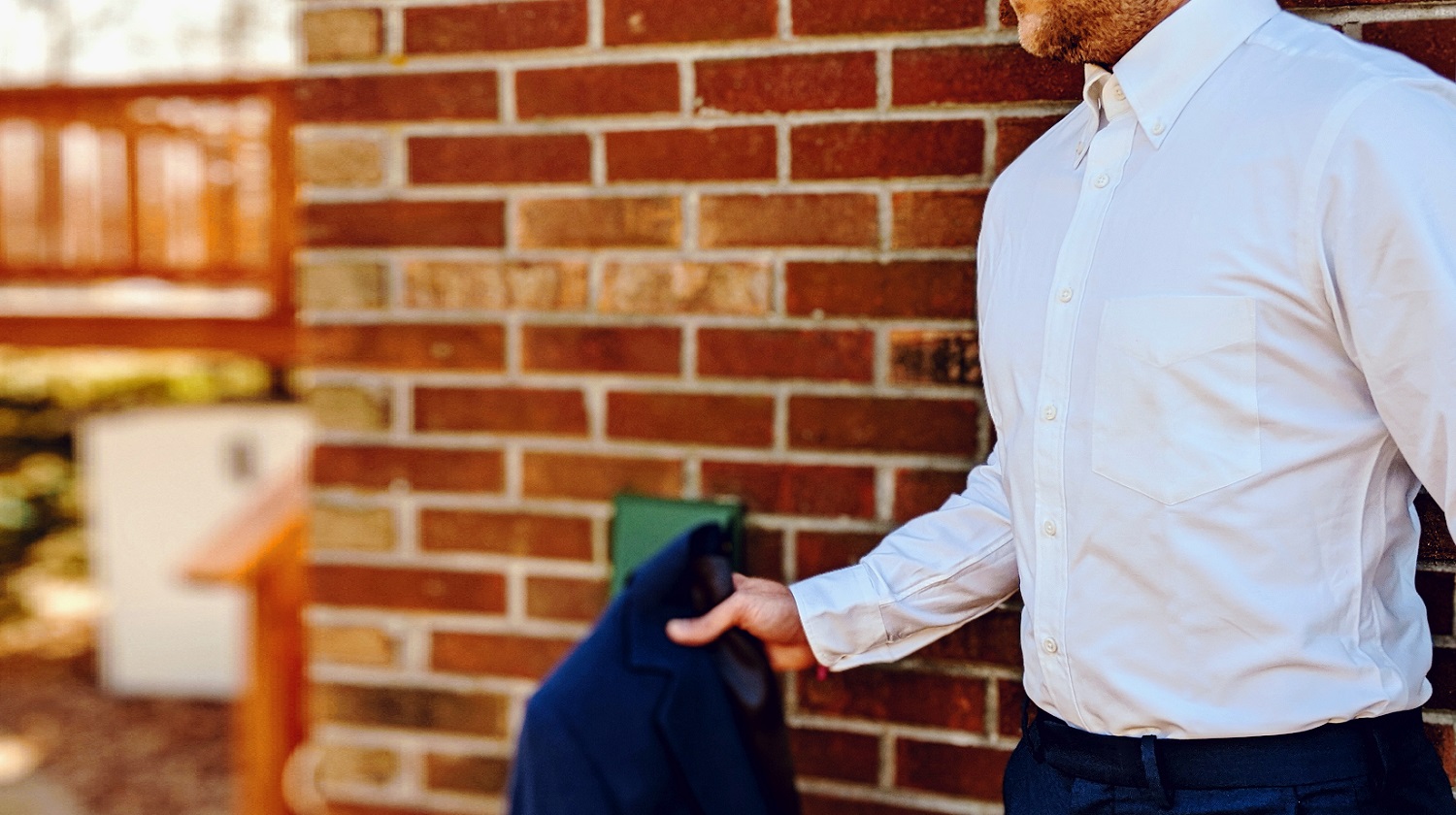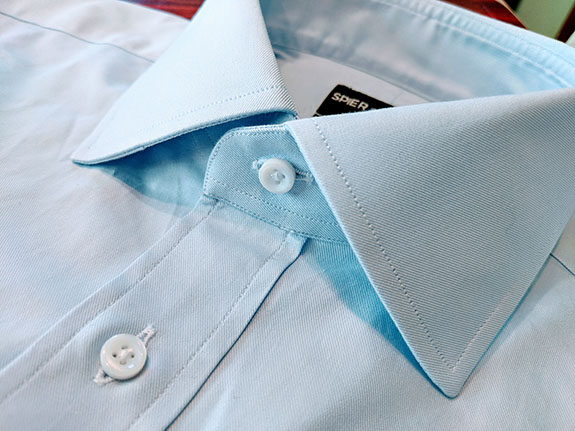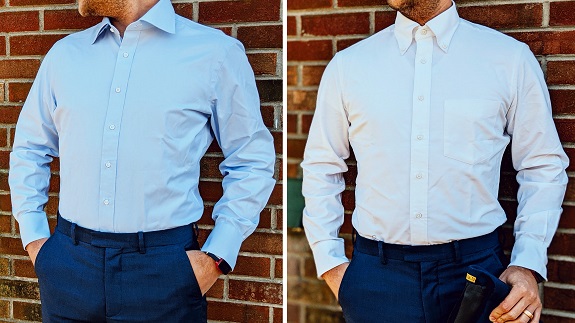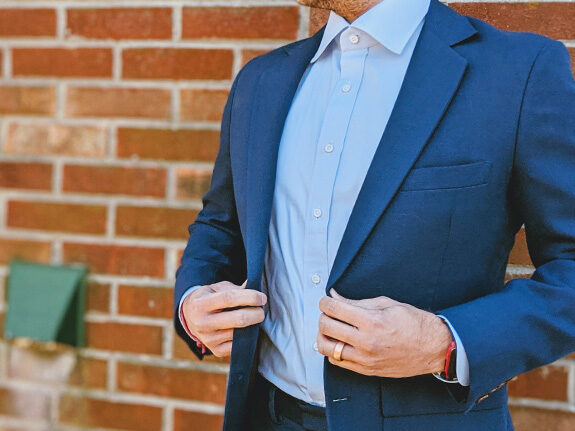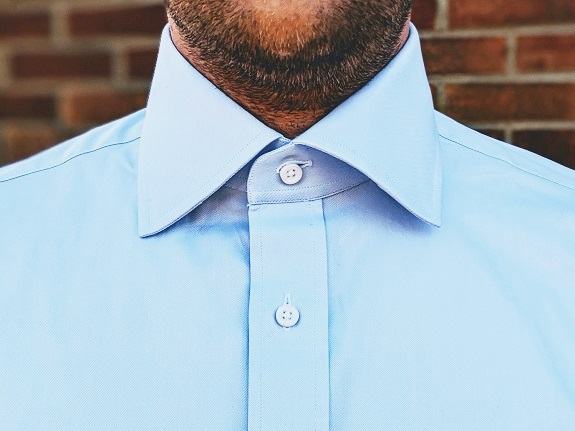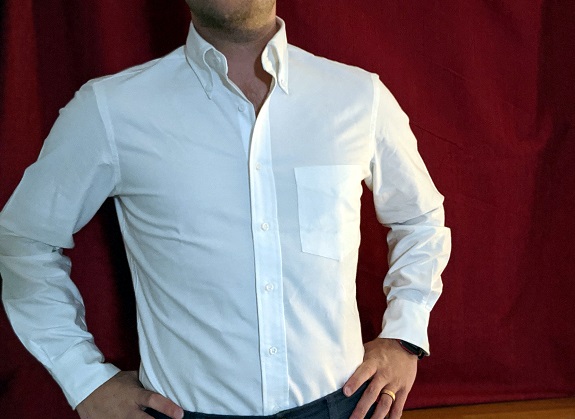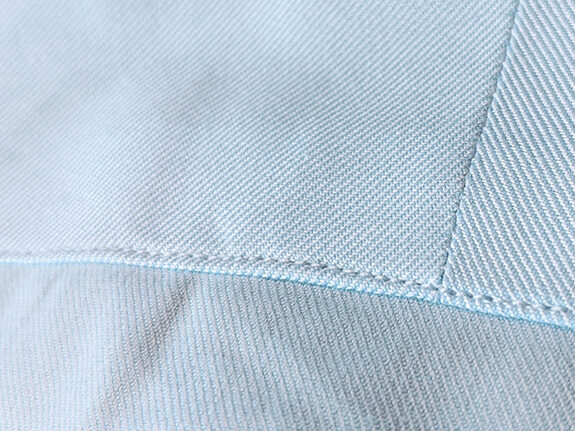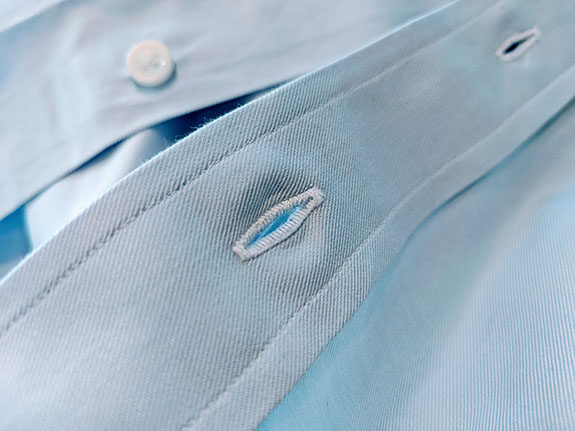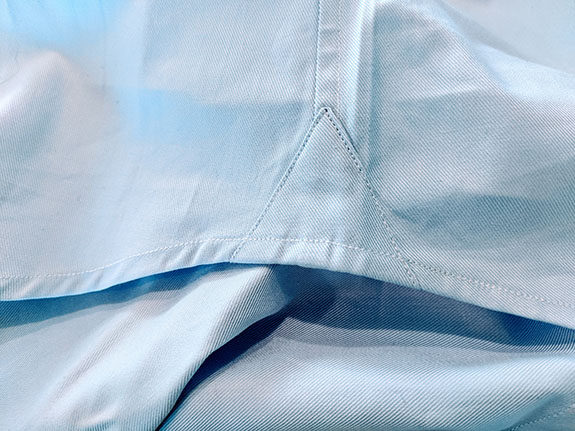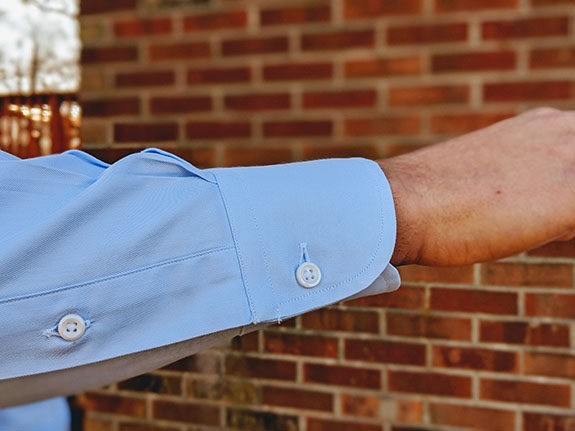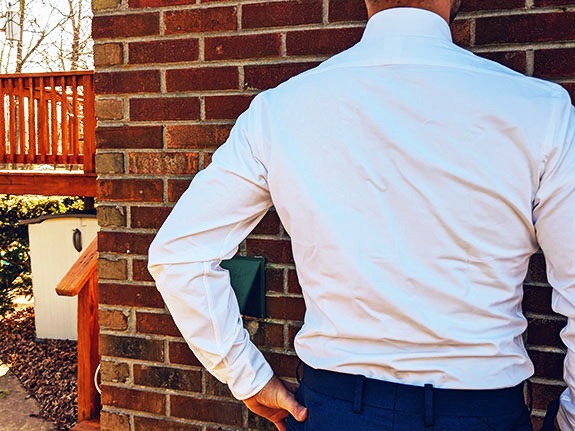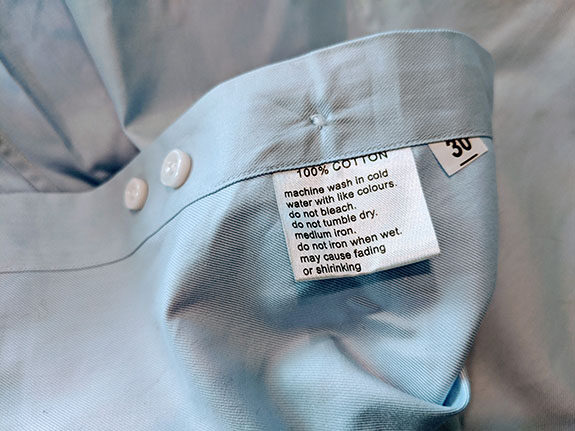Spier Oxford Button Downs & Fine Twill Dress Shirts – $48 – $58
About the Author: Ryan N. is a professional web developer for (and alum from) the University of Delaware, who keeps a close shave as to not be confused with his strongly-bearded twin brother. He plays guitar and drums, loves going to concerts with his wife, and loves being a dad.
When Spier and Mackay started making really nice, half canvas suits for $350 – $400, a lot of us forgot that they were founded as a shirt maker. And then Spier started making really nice sportcoats and shoes and more and… well, a lot of us just plain forgot what their original goal was.
Not a bad problem to have I suppose.
But it is true that their original goal as a company was to make high quality shirts with fabrics from some of Europe’s finest, heritage mills, for an actually affordable price.
The suits came later. Shirts are what Spier was actually founded to do.
Their shirting website outlines a laundry list of impressive, high-end features at Nordstrom prices: 100% Egyptian cotton, pattern matching, natural shell buttons, high stitch density, single-needle construction, split yokes, and premium collars. Heck, Spier and Mackay weren’t satisfied with the colors and feel of Oxford fabrics available, so they made their own. Yes, the OCBD fabric here is exclusive to Spier and Mackay. Impressive.
But how does it all come together, feel, and fit in person? Let’s find out.
Slim Fit Twill Dress Shirt in Light Blue – $58 | EXTRA Slim fit Oxford in White – $48
Blue is slim fit, White is EXTRA slim fit.
Both are a size 15.5 neck / 33 sleeve on 5’9″, 160 lbs
Right away I was really impressed. These shirts are gorgeous. Taking them out of the box, you can immediately see and feel the quality workmanship that goes into each garment. Every detail evokes thoughtfulness and high-end construction. Spier’s expressed goal was to make the shirt the way it’s supposed to be made, and not compromise on quality, to create great value for their customers. They nailed it in that regard. Let’s look at some of those details up close.
The collars lead the way.
The first thing you’ll notice is the collar. For their twill shirts, it stands up straight and strong. A “reverse-fused,” hand-turned, 9-piece collar reinforced by German interlining, this is NOT a wimpy collar by a long shot. You can wear this all day with comfort and ease, and never worry about it flopping about.
Their dress twill spread collar. Strong lines and construction.
By the way, per Spier, “reverse-fused” means that “the outer part of the collar band has the fusing on it. Most companies will fuse the inner band, which touches your neck. This can be a little hard and can cause discomfort and irritation during a full day of wear. Reverse fusing, also supports the collar leaf better. I’m not sure why more companies don’t do it this way, but is found more commonly on higher end shirts.” Awesome. Removable stays means easy ironing, as well as swapping whatever stays you prefer instead of the included plastic ones. The spread collar has a good wide stance, but it’s not a cutaway/super spread either.
OCBDs are inherently more casual, but Spier’s oxford collars are no slouch. At all.
Their oxford cloth button downs have excellent collars as well. These are not cheap, forgotten, super casual OCBDS where the too-short collar points are all but pasted to the front of the shirt. The fabric (again, a Spier exclusive) helps guide the substantial points with that fancy S shaped “roll” a lot of guys chase. It’s a noticeable step up in looks and quality.
That collar curve & sweep. Nice.
In high-end dress shirts, you’ll find single-needle stitching instead of double-needle stitching. Picture the inseam on your Levi’s — that’s double-needle stitching. It adds bulk and potential pucker to your seams, and it’s found on many off-the-rack shirts because of its ease and speed of machining. Spier and Mackay opted for single needle. It’s a slower process, but more visually attractive, and stronger since the fabric is folded over in a specific way and stitched twice over a single line. Stitching like this requires more time and experience to pull off, but that’s what Spier & Mackay wanted for their shirts. So that’s what we get. Yay us!
Single needle and high stitch density.
Another indicator of quality is the amount of stitches per inch, called stitch density. Mass-produced shirts have a low stitch density, meaning the stitches on your shirt look much more like dashes than dots. Now, there’s obviously a limit to stitch density — otherwise all those little holes would tear the shirt apart — but quality shirts have a stitch density of at least 18 stitches per inch, and that’s what these shirts have. That’s the ticket.
Buttons are river shell instead of plastic. Buttonholes are made for smooth operation.
While we’re here, let’s touch two things that are directly tied to stitching. I’m talking, of course, about buttons and buttonholes. Natural river shell buttons — not mother-of-pearl, reserved for their “Purple Label” line, but far better than plastic — have a solid feel and are cool to the touch (bet you didn’t know that was a quality indicator, did you?). The buttonholes themselves are cut then stitched, and not the other way around. This results in a smooth, finished buttonhole with less resistance to slide a button through. On the other hand, buttonholes that are stitched on both sides, then punched through the middle, result in frayed buttonholes for days. The final buttonhole on the placket is horizontal, another hallmark of fine quality, and extra buttons hide on the back of the placket.
Would love a little more leeway here. These are sewn pretty tight to the fabric.
The only thing I would have liked to see here is “shanked” buttons, where extra thread is wrapped around the threads between the button and fabric, making a solid center and lifting the button off of the fabric. I found the buttons to be a bit close to the shirt and thus a bit difficult to fasten and remove easily.
Split yoke (up top) makes for better range of motion.
When we’re talking about quality shirting, a split yoke is front and center. Well, technically BACK and center. Having the yoke split like this allows for more range of motion, because the fabrics are “cut on the bias,” a fancy way of saying on a diagonal. The highest quality shirts match the pattern up like a mirror, with each side “reflecting” the other. What I found surprising about the fine twill in particular, was that even though the “pattern” of the twill is so fine, they still matched up the patterns on either side as though it were a larger pattern. Now THAT’s attention to detail, and so satisfying to look at.
Side gussets for extra strength.
The point where the front and back meet at the side, specifically at the hem of the shirt, is a stress-point where a shirt is prone to breaking. To combat this, high-end shirts will use what’s called a side gusset, a small piece of fabric that redistributes the single point of contact into a stronger base. Once again, naturally, Spier has included these on all of their shirting.
Pretty standard, single barrel round cuffs.
The cuffs on both of the pieces I tried out are single barrel round cuffs, with one button attachment and one smaller button on the sleeve placket to allow for rolling the sleeves up. These are fairly standard and sit comfortably without being suffocating. My watch seemed to barely fit under though, something notable. The shirt hem hits well beyond waistline, so there’s plenty to tuck in. No chance of that tail coming untucked on you. These are NOT shirts meant to be untucked. They’re dress shirts through and through. So, wear ’em as such.
The extra slim fit. Undarted back but “shaped for fit.”
What I can’t decide on, though, is the fit. The “Slim” was a bit too generous for me, so I would go with the Extra Slim as my preference. The back of the shirt is “undarted and shaped for fit.” I’m not sure if I’m a fan of this look or not. On one hand, darts are a form of crutch, using a machine to form the back rather than structuring the fabric in a way that fits well and looks clean. They’re also more difficult to iron than a clean back. This is a preference thing. In practice, for me at least, I felt like darts wouldn’t have looked out of place here. The premium fabric is also just shy of completely opaque; I wore a white t-shirt underneath the oxford, which usually shows up like a beacon of light, but you can only see it if you really look for it. Very nice. And the ease of care here is appreciated. They’ve got super nice fabrics, but care is: Machine Washable. They don’t suggest machine drying them though.
Add it all up, and you have absolutely FANTASTIC value for the money, whether you’re a daily driver or someone who only dresses up occasionally, there is just so much to admire about the approach that Spier and Mackay took here. These feel like shirts that should cost much more than the $50 to $60 price tag. No, that’s not “cheap.” But the value here is kind of astounding. You can also “bundle” 3 or more for a $10 discount on each. I’m kind of out of superlatives here. One of the few drawbacks? It’s Spier, so they can’t keep these things in stock consistently. At post time, they’re getting close to sold out. That’s kinda frustrating. But that just requires some planning, a little patience, and being ready to pounce once a new batch comes in.
